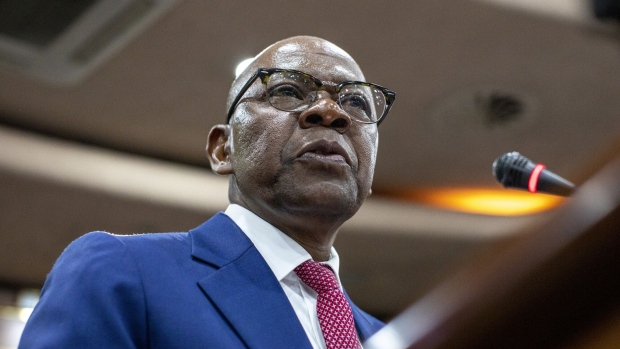Jul 4, 2024
Zimbabwe Rules Out Intervention as ZiG Hits Record Low Against Dollar
, Bloomberg News

(Bloomberg) -- Zimbabwe’s gold-backed currency weakened to a record low against the dollar, as the nation’s monetary authorities ruled out the need for intervention to support it.
The ZiG, short for Zimbabwe Gold, weakened 0.5% to 13.76 per dollar on Thursday, its biggest single-day drop since the unit was launched three months ago, according to data posted on the central bank’s website. That brings the currency’s cumulative loss to 1.5% since it debuted at 13.56 per dollar in April.
The central bank views the latest decline as part of normal currency fluctuations and sees no need to intervene in the market, said Deputy Governor Innocent Matshe.
“There was also a time that it strengthened a bit and that’s as it should be,” he said by phone. “The worry would be if it is one way.”
You can follow Bloomberg’s reporting on Africa on WhatsApp. Sign up here.
The ZiG is Zimbabwe’s sixth attempt at having a functioning local currency in the last 15 years. It’s backed by 2.5 tons of gold and $100 million in foreign currency reserves held at the central bank.
The International Monetary Fund said last week that the unit’s introduction has ended the instability that led to the eventual abandonment of the ZiG’s predecessor, the now defunct Zimbabwe dollar.
Matshe said the production of winter crops and output by the mining industry is expected to help the currency strengthen in the months ahead.
“The currency is still settling,” he said, adding that the central bank plans to “deepen the foreign currency market through several activities.” He didn’t elaborate.
The ZiG had been expected to strengthen after quarterly corporate taxes fell due at the end of last month, with monetary authorities forecasting a boost in demand for the currency. Still, the central bank is pleased with the response so far to an advisory from Treasury that companies settle half of their taxes in the ZiG, Matshe said.
Sign up here for the twice-weekly Next Africa newsletter
©2024 Bloomberg L.P.





